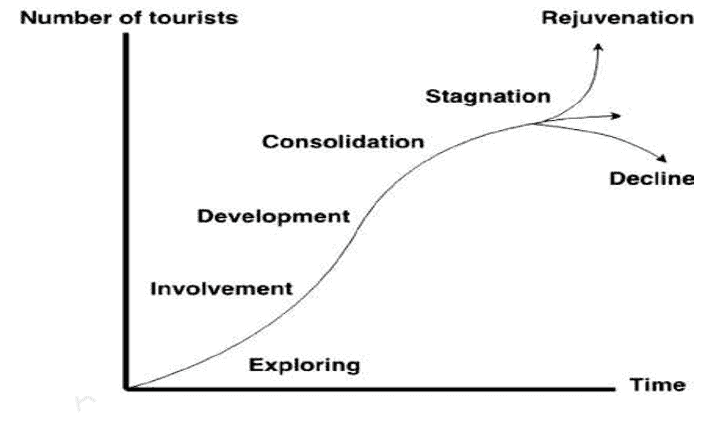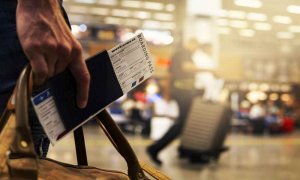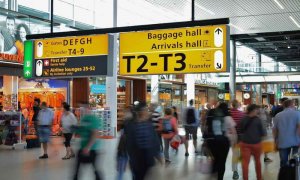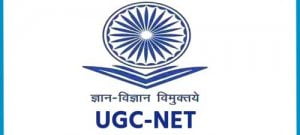Tourism Product Life Cycle: The Product in Tourism Industry is different as tourism industry is a service industry. It provides products that are nothing but experience and services. The service product refers to an activity or a set of activities that a marketer offers to perform, resulting in satisfaction of a need of the customer or the target market in return of money. Products that fulfil all the pleasure, leisure or business requirements and wants of tourist at places other than their own place of origin are called as tourism products.
A product in tourism can be either a tangible item or Intangible item. Tangible item such as a comfortable seat in Bus, Train or aircraft or the food served in a restaurant or aircraft and Intangible item such as the quality of services provided by an Aircraft or scenic beauty at a hill Station. So, we can say that in almost all the cases, the tourism product is a mix or blend of both intangible and tangible items. This combination of different components results in giving the tourist the total travel experience and satisfaction.
Also read Tourism
Philip Kotler (Kotler and Keller 2006) defines the concept ‘service’ as a product from marketing viewpoint. “A service is any action or performance that one party offers to another that is importantly intangible and does not result in the ownership of anything. Its production might or may not be tied to a physical product”.
Meaning of tourism Product life cycle
Tourism product is a group of various components and elements which are combined together to satisfy the needs and wants of the consumers. The product in tourism industry is the complete experience of the tourist from the point of origin to the destination point and back to the origin point. The product in Tourism may be defined as the ‘sum total of physical and psychological satisfaction it provides to the tourist from the origin point to the destination and during their travelling route’.
The raw material in tourism industry is the natural beauty, Climate, History, Culture and people of the destination and some other important elements are the existing facilities or the infrastructure such as water supply, electricity, roads, transport, communication, services and other ancillary services. If any of these elements get missing, then it will completely destroy the whole experience of the tourist. Tourism products are offered in the market with some cost i.e. money. A Product could therefore be defined by its three characteristic:
- The product must be offered
- It should satisfy some need or needs of the customers
- It should be exchanged for some value
So, we can say that if the Tourism Product i.e. the sum total of a country’s tourist attractions, transport systems, hospitality, entertainment, and infrastructure is well designed and developed and then offered to the tourist this will ultimately result in consumer satisfaction. These are nothing but various services offered to the tourists, and falls under the category of service product. Tourism product is the prime reason for tourist to choose a destination. Tourism product helps in earning revenue for the destination. So all the tourism product should be properly preserved and promoted
Tourism product life Cycle
Tourism destinations are dynamic in nature. The destination is a gathering of products. Destinations like product’s experience life cycles. The concept “Tourism Product life cycle” is used to explain the development of a particular destination and the succeeding levels they go through over time to time. In tourism and tourism related businesses, achievement means knowing this whole procedure.
The theory of Tourism product life cycle has the potential to be put into practice while planning for tourist destinations. This idea provides clear picture for understanding the process of change within tourist destinations. It provides a tool to conceptually predict the long term difference so that policies and plans could be evolved for proper land use, economic development and marketing without harming environment.
Various models were made from time to time that examine the evolution of destinations, although mostly are just descriptive. With the exposure of mass tourism, a larger number of researchers have suggested evolutionary models in which the concept represents additional stages of destination such as saturation and decline. This contributes on the belief that all the tourism destinations go through some stages. As a result any kind of tourist product has to cross several phases which are known as Tourism Product life cycle.
The following stages of product life cycle are explained considering “destination” as a tourism product, as without a destination tourism cannot take place and is one of the most important tourism product.

I. Exploration Stage:
It is the first stage of tourism product life cycle. In this stage new tourism products are discovered and introduced. Small number of visitors start coming to the unspoiled destination. Mostly they are the adventure seeker and nature lovers start travelling to the unexplored destination with the aim to experience different types of activities and adventure.
Tourist those who are searching for different varieties in their vacation may find a places which are special on the basis of its natural beauty, traditions, history, landscape and culture. At this stage there will be no or limited tourist services accessible. Since there is no awareness about tourism and its benefits so there is no involvement of local people in tourist money making activities. There is very less social and economic impact because tourists are very few and facilities available are not so good and no proper infrastructure is developed for the purpose of tourism activities.
Also read Tourism Product Concept
II. Involvement Stage:
This is the second stage of tourism product life cycle. In this stage the number of visitors starts increasing gradually and the host community of that destination starts knowing about the growth in the movement to their place/destination. And further these hosts start getting engaged themselves in tourism related activities. Even the local authorities also start participating in the tourism related activities.
Local communities also start setting up their own business to provide various tourist related services and facilities such as accommodation, meals, guides services, and transportation. Involvement in these tourist activities also improve the quality of life for the locals and also create job opportunities. And also helps the local community to earn money and fulfil their wants and desires. Thus tourist destination starts emerging and good infrastructure is built and developed. Marketing, advertising and publicity is commenced in this stage.
Since locals start involving themselves in the tourism activities, they learn about different natural resources in their surroundings and also knows about the value of their culture and traditions. Through involvement activities awareness for environment protection also starts increasing.
Involvement of the local community also help to improve their basic needs like Hygienic food, Health and Medical facilities, education etc. there is also improvement in the number of people’s involvement in different activities and job opportunities starts to rise or increase. This increase participation and job opportunities help to improve the economic and social structure of that particular destination. This is the stage when locals start to identify opportunities for business or start-ups and scope for growth certainly rises. By the name of involvement locals start to use their culture and traditions as tourism products. For attracting more number of tourists and which further tends to create USPs and improvement in the destination image.
III. Development Stage:
Development stage is the third stage of tourism product life cycle. Where the number of tourists arrivals are much higher from the previous stage. And at this point foreign investment is attracted to the destination due to commencement of a well-defined tourism market. Therefore international hotel chains, food units and entertainment facilities starts taking interest in the destination and set up their business with the aim of providing world class facilities and earn profits out of the destination.
Many Big companies start investing in tourist services at the destination by seeing the emerging potential of the area. Development rate starts increasing which further improves the quality of life for the local communities, accessibility of the destination is improved. Marketing & advertising becomes prime intensive. Modernized infrastructure is built. Natural and Man-made attractions are developed for tourist.
Also read Travel Agents and Tour Operators
Equal involvement of Government, locals and private players can be seen in this stage. This also helps in attracting more and more number of tourist and large number of jobs for local community are created. At this stage marketing and promotional campaigns activities usually play an important role as the destination starts to become favorites for many travellers.
Various efforts are made by various stakeholders for the growth of the destination and increase tourist movement to the given destination. At this stage there is a huge scope for job opportunities in different sectors and for investment in the tourism related businesses. Development stage also boost the economy of the destination and helps in creating foreign exchange for the growth of the nation.
IV. Consolidation Stage:
This is the fourth stage of tourism product life cycle. In this stage the local economy is likely controlled by tourism activities. In this stage, the local community starts earning good amount of financial resources which helps in improving the quality of life for the hosts. The local economy in this stage becomes dependent on tourism activities. The tourist volume at the destination is continuously increasing. Promotional and marketing efforts are increased to attract more visitors towards the destination.
You can read more on travel motivation
Tourist services are provided by both the national and international suppliers/companies. Slowly the destination starts to lose the appeal as the products offered here starts to get outdated and negative impacts of tourism activities can be seen on the destination, its natural beauty, its natural resources and environment, on the society, on the attractions and so on. If proper steps and policies are formed at this stage the life of the destination can be increased for a longer period of time and the destination can sustain for the forthcoming generations.
Also read Travel Agents and Tour Operators
At this stage proper implementation of the planned policies needs to be applied and preservation of the destination and its resources can be done. In this stage the local communities also start to shift from other industries or activities like farming and fishing, which results in suffering of these industries. The older infrastructure like buildings are converted into lodging units like heritage hotels, guest house or homestays. Therefore some of the old buildings also loose there unique characteristics or charm or become unattractive and a lower client base might result.
V. Stagnation Stage:
This is the fifth stage of tourism product life cycle. In this stage the carrying capacity of the destination reaches to its last limit or is exceeded. Which finally results in economic, social, cultural and environmental problems. Artificial attractions starts to replace the natural or cultural Attractions and the destination becomes more fashionable. This will result in loss of original features of the destination which means that the Destination has started losing its charm and USPs. And there is a gradual fall or decrease in the number of tourists visiting that particular destination.
You can read more on travel motivation
Also there is an increase in the competition from other competitors, loss of authentic and original features and rowdiness may arise. Which further results into decline in the level of tourist visits and local businesses and services are effected to large extents? For example: If the destination is a beach and it is now very crowed and full of garbage and rubbish, this will certainly stop the growth of the destination. Strong decisions need to take at this point of time otherwise, the number of tourist visiting the destination will start declining and this will affect the local business and services. Which would finally impact the economy, society and the present environment of the destination.
VI. Decline or Rejuvenation Stage:
This is the final and Sixth stage of Tourism product life cycle. From the point of stagnation onwards there are two types of possibilities i.e. Decline in the tourist movement or rejuvenation means re-growth or re-introduction of the destination with new tourism products like attractions and other tourist facilities.
There can be slow or rapid decline of a particular destination. Visitor’s number will start falling or decreasing and regular visitors are replaced by tourists looking for a affordable/cheap vacation or trip. The movement of tourists starts to shift and tourists are attracted to new and beautiful destinations. The destination becomes a tourism slum or finds itself devoid of tourism activity altogether.
Also read Travel Agents and Tour Operators
Since there is a rapid fall in the number of tourists at the destination as there are more negative impacts that can be seen on the destination. And the attractions starts to completely loose its charm and USPs. Problems like high pricing, overcrowding, environmental pollution, political instability, high crime rates and overrated attractions are some of the major reasons for decline and stagnation of tourist arrivals at a particular destination. Which results to fall in the number of tourists visiting the destination and the destination certainly declines or fall.
Rejuvenation is a reasonable change and establishment of the resources base. Large number of investments is done by private companies or by government, or by both for the transformation of the destination and starts to introduce new tourism product line. As they also start to create a new set of artificial attractions within the original destination to boost its popularity and attract more tourists.
You can read more on travel motivation
Previously unexploited natural resources are also utilized. This will ultimately lead to the beginning of another cycle. The reason for rejuvenation of a destination are proper research and analysis on product development, right steps by the local administration, identifying new areas for development, creation of world class infrastructure etc. Otherwise, a permanent decline of the destination will sets in.
Tourism Product Life Cycle




